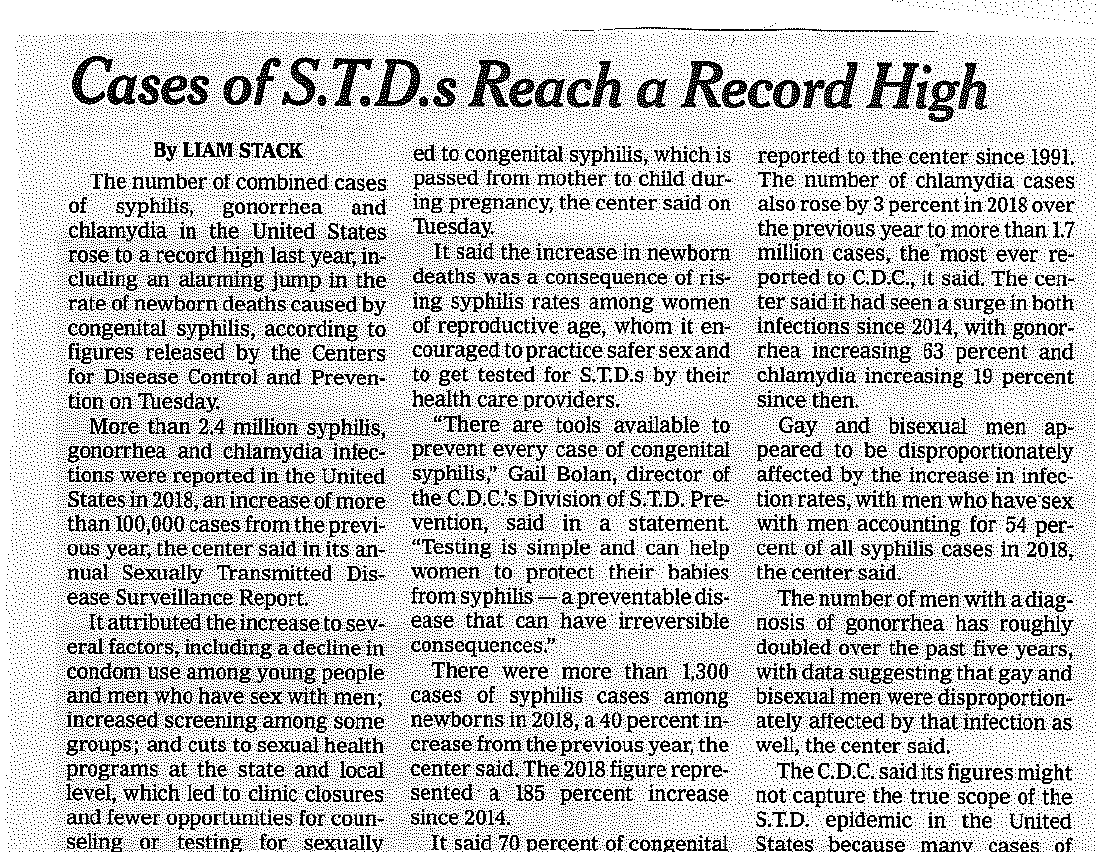Coinciding with those deaths, we are seeing a continued increase in congenital syphilis, or syphilis passed from a mother to her baby during pregnancy. In addition to newborn death, congenital syphilis can result in miscarriage or severe lifelong physical and neurological problems for the child. There were a total of 1,306 congenital syphilis cases reported in 2018; the most since 1995. The case rate spiked 40 percent in one year alone and 185 percent since 2014.
We face a struggle that is at once national, but also highly concentrated. Forty-one states and Washington D.C. reported at least one case of congenital syphilis. Yet five states were disproportionately burdened with the majority (70%) of cases. Every single instance of congenital syphilis is one too many when we have the tools to prevent it.
Our situation is severe. However, we can stem the rising tide of STDs by working together – CDC, decision-makers and community leaders, health departments, healthcare systems including healthcare providers, and researchers.
We have an urgent to-do list:
- First, we must address the rising rate of syphilis among women. Data show the increase in congenital syphilis goes hand-in-hand with increasing syphilis rates among women of reproductive age. One clear solution is to intensify our efforts to find women with syphilis and swiftly connect them to care and immediate treatment. Doing so keeps them healthy and, for those who become pregnant, it keeps their babies healthy, too.
- The second part of the equation is fairly straightforward: Protect moms = Protect babies. To prevent congenital syphilis, it is critical to increase prenatal syphilis testing and provide immediate treatment. CDC recommends healthcare providers test allpregnant women at their first prenatal visit. Women who are more vulnerable to acquiring syphilis later in pregnancy should be tested again at 28 weeks and at delivery.
Outside of the exam room, we must topple the barriers to prenatal care that hinder our ability to reach, quickly test, and treat pregnant women. We can all – providers and public health professionals alike – consider who patients and clients are, the circumstances of their environment, and how those circumstances may affect their risk. This kind of thinking is essential to breaking an endless cycle that endangers the health and wellbeing of too many.
- And third, while we focus on congenital syphilis, we must also uphold basic STD prevention and control to halt the rising increases of other STDs. State and local health departments should strengthen the local public health infrastructure and ensure resources are directed appropriately. In addition, health care providers should make screening and timely treatment a standard part of medical care.
In spite of all of these challenges, CDC remains committed to keeping Americans healthy through STD prevention. As anyone who knows me knows, I have dedicated my entire career to this important work—and continue proudly standing at your side to take on these diseases. Together, we can turn the tide to protect the people we diligently serve day in and day out.
Thank you for your unwavering dedication to STD prevention.
Sincerely,

